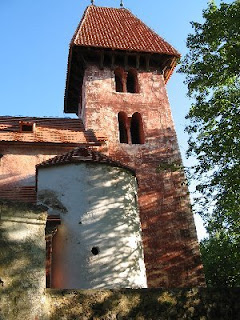 My husband and I were playing the tourists last week. We decided that we would make the one and a half hour drive to Jindrichuv Hradec to see the town and its castle. I will blog about the visit shortly, but this post is about an incredible experience we had on our way home. We had come out of Jindrichuv Hradec on a minor road and were making our way through the countryside towards Trebon.
My husband and I were playing the tourists last week. We decided that we would make the one and a half hour drive to Jindrichuv Hradec to see the town and its castle. I will blog about the visit shortly, but this post is about an incredible experience we had on our way home. We had come out of Jindrichuv Hradec on a minor road and were making our way through the countryside towards Trebon.We were approaching a medium-sized lake – a fishpond for which the area is famous – when I suddenly noticed three large birds circling above it. At first I thought them storks given the size of them. But then as we came nearer, it was apparent that this was not the case. Two were far larger than storks (which are large birds by British standards), they had a wingspan the length of a bedstead.
My husband had to draw my attention to a bend in the road, I was so preoccupied in watching them. Some trees shielded them from the view from the road and then we saw them again. Now ready I pulled over to observe them more closely. There appeared to be two adults and one juvenile silhouetted against the sky, which made it hard to discern colouring. At the ends of their wings the feathers were spread out like the fingers on a hand, this and their bodyshape and size confirmed that these were large (very large) birds of prey – larger than the buzzards we see near our home. This and the fact that they were patrolling a lake with wildfowl on at approximately the level of the tree crowns gave away their identity. We were watching white-tailed eagles, the largest raptor in northern Europe and one which I had read could be found patrolling the extensive system of ponds around Trebon.
I had been planning a birdwatching foray to Trebon, but had had little expectation of seeing anything so spectacular. Now here, unlooked for, were these princes of the air. We sat a little and watched with open mouths.












